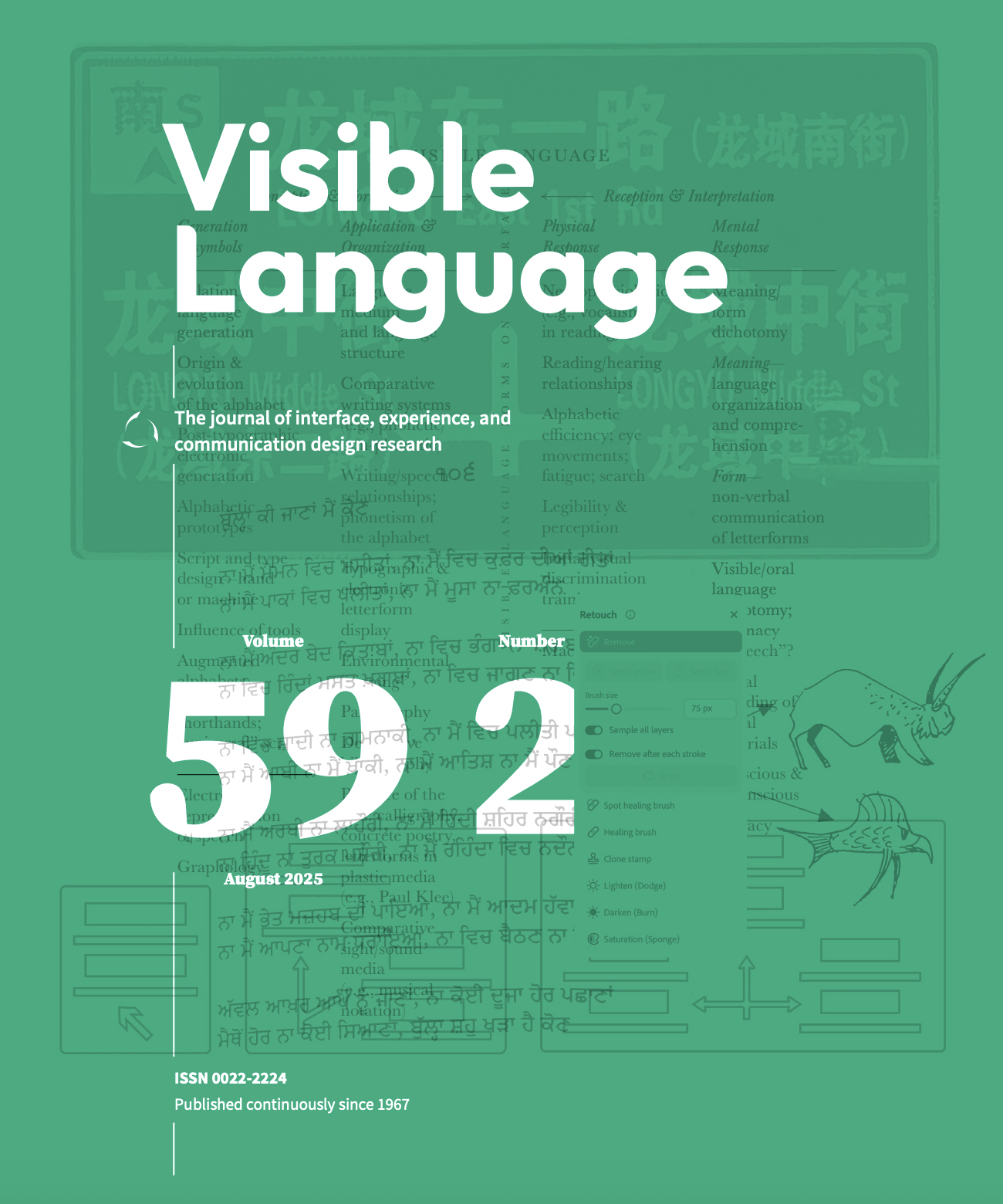Visible Language Journal

Visible Language Journal is the journal of research in interface, experience, and communication design. Visible Language impacts academic professionals, industry professionals, and students by supporting knowledge generation in and adjacent to design. The Visible Language editorial consortium is committed to rigor and relevance in design scholarship. Visible Language is the world’s oldest peer-reviewed design journal. The journal is SCOPUS-listed.
The journal advocates the teaching, research, and practice of visual communication design to enhance the human experience. The journal is published by the Visible Language Consortium: University of Leeds, University of Cincinnati, and North Carolina State University. Visible Language balances artfulness with science, innovation with respect for human patterns of use, evidence-based research with intuitive exploration, and technology with humanity.
Journal Editorial Team

Professor Maria Lonsdale
Editor-in-Chief
University of Leeds, UK

Professor Mike Zender
Editor
University of Cincinnati, Ullman School of Design, Ohio, USA

Dr Matthew Peterson
Editor
North Carolina State University, College of Design, USA

Dr Jeanne-Louise Moys
Associate Editor
University of Leeds, UK

Muhammad Rahman
Associate Editor
University of Cincinnati, Ullman School of Design, Ohio, USA

Dr Deborah Littlejohn
Associate Editor
North Carolina State University, College of Design, USA

Dr Arjun Khara
Assistant Editor
University of Leeds, UK

D.J. Trischler
Assistant Editor
University of Cincinnati, Ullman School of Design, Ohio, USA

Helen Armstrong
Assistant Editor
North Carolina State University, College of Design, USA

Dr Matthew Baxter
Editorial Manager
University of Leeds, UK

Dr Rafiq Elmansy
Editorial Assistant
University of Leeds, UK
Special Student Issue 2025
Visible Language is looking for submissions for an issue to include student articles on research into digital, graphic and typographic design. In particular, we welcome submissions and using methods that can be broadly categorised as either collections-based approaches or participant studies. The objective of the special issue is to allow students to experience the publication process. The research might be on a smaller scale than would normally be published. Accordingly, studies may involve smaller numbers of artefacts or participants, as appropriate to an exploratory study.
In line with the aims of the journal, we wish to actively support emerging scholars and therefore encourage supervisors/tutors to be involved in the publication process with joint authorship where appropriate. Following the practices of the journal, we are willing to liaise with authors to advise on what is suitable for submission, make suggestions, and provide feedback. Please contact our Associate Editor, Dr Jeanne-Louise Moys (j.l.moys@leeds.ac.uk) or our Editorial Manager, Dr Matthew Baxter (m.g.baxter@leeds.ac.uk) well in advance of the deadline, 3 September 2025. Full details here.